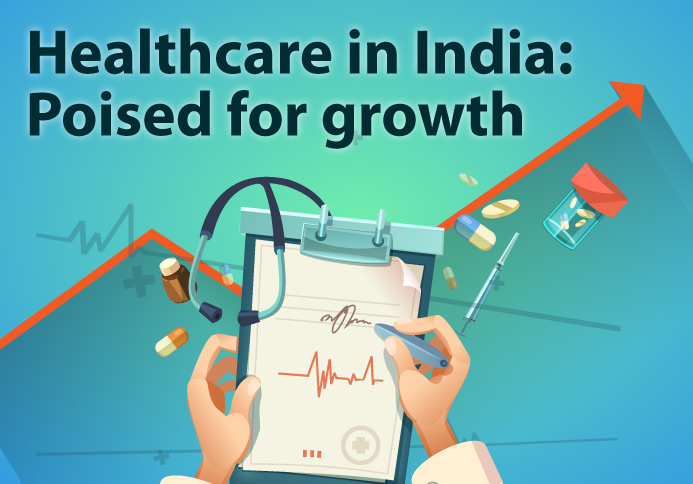Healthcare in India: Getting into gear
HDFC, Tester
The healthcare sector is playing an increasingly important role in India’s growth story.According to an IBEF report, during 2008-2022, the healthcare market is expected to record a CAGR of 16.28%.The Indian healthcare sector is expected to reach Rs 8.6 lakh cr by 2022.
Rising income levels, greater health awareness, increased precedence of lifestyle diseases, and improved access to insurance would be key contributors to growth. The sector is expected to generate 4 cr jobs in India by 2030. One lakh jobs are expected to be created by the Ayushman Bharat initiative, and the National Health Protection Scheme. As of August 2018, the number of primary health centers (PHCs) stood at 32,789, and the number of sub-centers stood at 1, 67,788.
Tilt towards digitalization
The healthcare industry in India is witnessing the start of a pattern that is expected to enable its growth and efficiency – that of digitization. Players are fastadopting technologies like big data, cloud computing, predictive analytics, mobility, artificial intelligence,and machine learning. This is being done with a view to offer a large quantum of clinical, operational and financial data to hospitals and insurance companies.
This move towards digital health brings with it many implications for the Indian healthcare sector. According to a publication, a few large hospitals and pharmaceutical companies have already started their journey towards digital transformation. However, it will take some time for these initiatives to become a part of the mainstream.
Looking within
The hospital industry in India stood at Rs 4 lakh cr in 2017 and is expected to reach Rs 8.6 lakh cr by 2023.The private sector has emerged as a vibrant force in the country’s healthcare industry, lending it both national and international repute. It accounts for almost 74% of the country’s total healthcare expenditure.
In December 2017, the Government of India provided grant-in-aid under the National AYUSH Mission (NAM) to set up AYUSH educational institutions in states and Union Territories where such institutions are not available in the Government sector, according to the report.
Other initiatives
According to the report, the Government has created the Intensified Mission Indradhanush (IMI) for improving the coverage of immunization in the country. It aims to reach every child under two years of ageand all pregnant women who have not been part of the routine immunizationprogramme. As of January 2018, Pradhan Mantri Surakshit Matritva Abhiyan (PMSMA), a programme launched in 2016 to ensure comprehensive and quality antenatal check-ups for pregnant women across India, has crossed the 1 cr mark.
In March 2018, the Union Cabinet approved financial support amounting to Rs 85,271 crfor the period of April 2017 to March 2020 in the Budget under the National Health Mission. This was done to encourage medical infrastructure in India. In August 2018, the Ministry of Health and Family Welfare set up the National Resource Centre for EHR Standards (NRCeS) to facilitate the adaptation of notified EHR standards, at an estimated cost of Rs 23.59 cr.
Data reveals that in India, substandard healthcare was responsible for an estimated 16 lakh deaths every year. Though the growth potential is huge for the healthcare industry, there is a long road ahead.
Related Posts
Don't miss another Article
Subscribe to our blog for free and get regular updates right into your inbox.
Categories
newsletter
 HSL Mobile App
HSL Mobile App 



